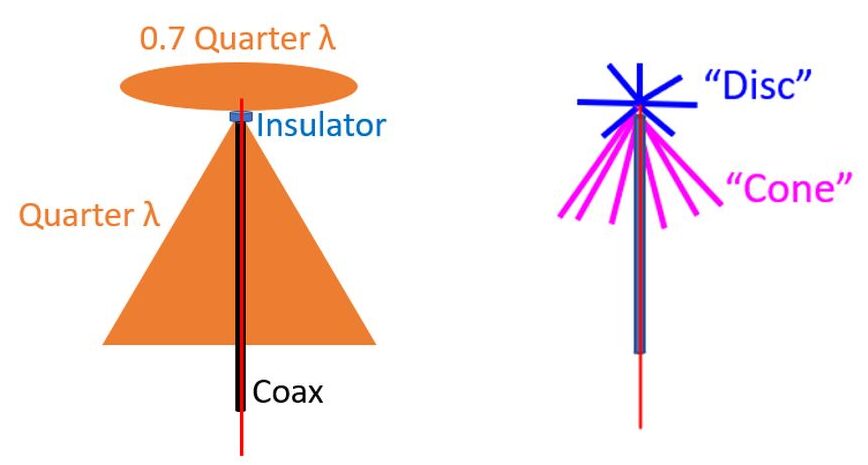Discone Antenna for Receiving Amateur Radio From International Space Station
Discone Antenna for Receiving Amateur Radio From International Space Station
My Twitter friend Jim Reed, N4BFR is using a Discone Antenna to receive amateur radio signals from International Space Station. Discone antenna, as the name implies, is a combination of a disc and a cone, typically mounted vertically, with the disc on top and cone below it. Discone antenna is vertically polarized and has gain similar to a dipole. But the specialty is that it is exceptionally wideband with a frequency range ratio of about 10:1. One such antenna made of solid copper sheets can theoretically cover from 700 MHz to 2 GHz. Instead of solid metal sheets, metal wires or rods in spoke configuration can be used to approximate a solid surface, at lower frequencies. This reduces the risk of damage to the antenna by wind.

Discone antenna has a narrow radiation pattern in the vertical plane with highest sensitivity in the direction of the horizon. As expected, it is less efficient when employed as a transmitting antenna than an antenna designed for limited frequency range. The disc diameter is 0.7 times a quarter wavelength of the lowest frequency expected. Feed point is at the centre of the disc into the central conductor of a 50 Ohms coaxial cable. Outer conductor of the cable is connected to the cone. Length of the cone should be a quarter wavelength of the lowest operating frequency. Cone angle is between 25 to 40 degrees. Cone and disc are separated by an insulator.